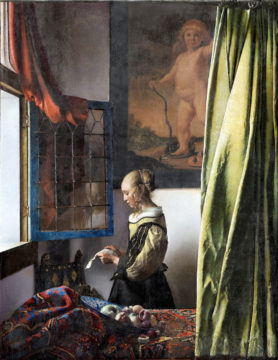Kenan Malik in Pandaemonium:

There is a scene in Marilynne Robinson’s novel Gilead in which the main character, John Ames, a pastor, walking to his church, comes across a young couple in the street. “The sun had come up brilliantly after a heavy rain, and the trees were glistening and very wet,” he recalls. The young man ahead of him “jumped up and caught hold of a branch, and a storm of luminous water came pouring down on the two of them, and they laughed and took off running, the girl sweeping water off her hair and her dress”. It was “a beautiful thing to see, like something from a myth”. In such moments, “it is easy to believe… that water was made primarily for blessing, and only secondarily for growing vegetables or doing the wash”.
It is a wonderful, luminous passage, typical of Robinson’s ability to discover the lyrical even within the mundane. Deeply Christian, and Calvinist, there is in her writing a spiritual force that springs from her faith. She would probably describe that scene as the discovery of a divine presence in the world. And yet, flowing out of that scene, is also an awareness that transcends the religious. It is the uncovering of something very human, a celebration of our ability to find the poetic in our simplest activities.
I was reminded of that passage as I was wandering through the Vermeer exhibition at the Rijksmuseum in Amsterdam last week.
More here.
